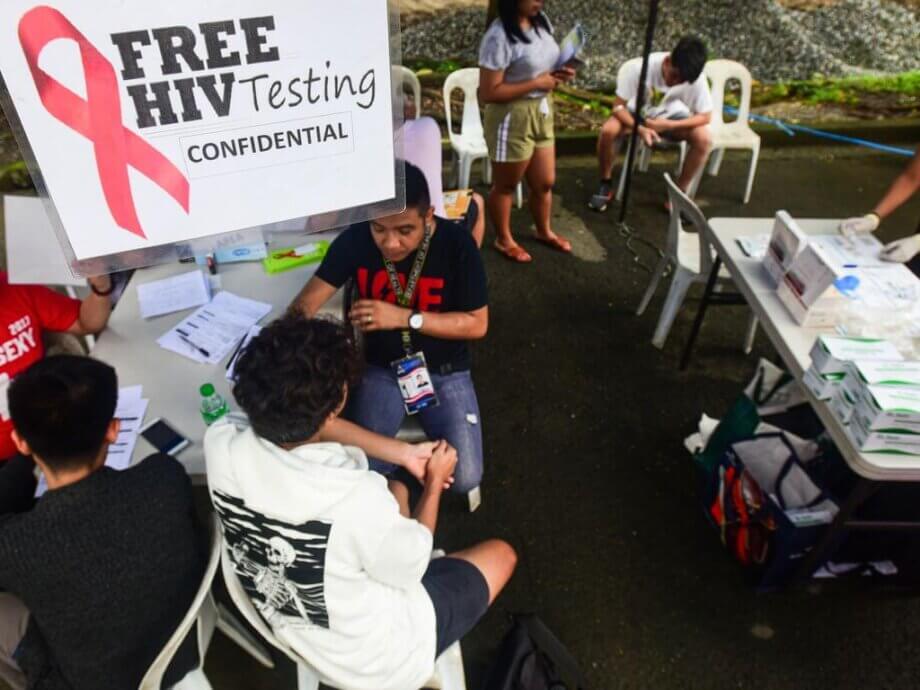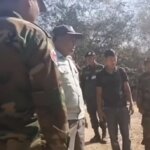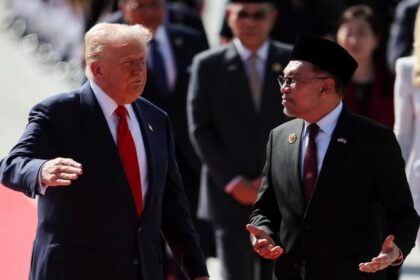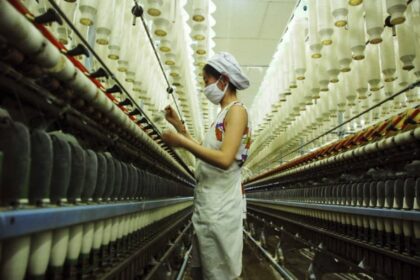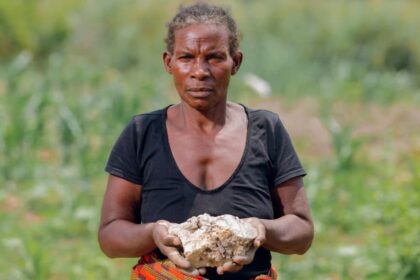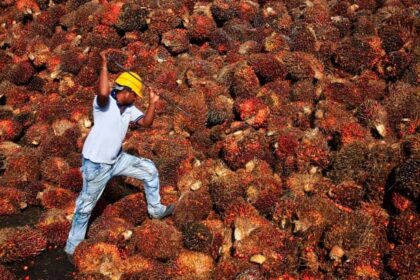The Alarming Rise of HIV Among Filipino Youth
In recent years, the Philippines has witnessed a dramatic and deeply concerning surge in HIV infections, particularly among its youth. While much of the Asia-Pacific region has seen declines in new HIV cases, the Philippines stands out for a staggering increase—over 500% in new infections since 2010. This crisis is not just a matter of numbers; it is a story of stigma, silence, policy gaps, and the urgent need for comprehensive sex education and public health reform.
- The Alarming Rise of HIV Among Filipino Youth
- Understanding the Surge: Why Are Young Filipinos at Risk?
- Stigma: The Invisible Barrier
- The Role of Sex Education: A Missed Opportunity
- Policy and Healthcare Gaps: Progress and Pitfalls
- Personal Stories: Living With HIV in the Philippines
- Community and NGO Responses: Filling the Gaps
- International Support and the Call for a National Emergency
- Breaking the Silence: The Path Forward
- In Summary
Every day, at least 57 Filipinos are newly diagnosed with HIV, with nearly half of these cases among those aged 15 to 24. The youngest reported case in 2025 was a 12-year-old child. Experts warn that unless decisive action is taken, the country risks losing an entire generation to a preventable disease.
Understanding the Surge: Why Are Young Filipinos at Risk?
Several interlocking factors are fueling the HIV epidemic among Filipino youth:
- Poor Sex Education: Many schools lack comprehensive sexual health programs, leaving young people vulnerable to misinformation and risky behaviors.
- Stigma and Discrimination: Deep-seated cultural and religious taboos make open discussions about sex and HIV rare, even within families. This stigma discourages testing and treatment.
- Policy Gaps: While laws exist to protect and support people living with HIV (PLHIV), implementation is inconsistent, and access to services remains uneven.
- Behavioral Risks: The rise of dating apps, increased access to pornography, and unprotected sex—often among men who have sex with men—are significant drivers of new infections.
- Systemic Failures: Experts and advocates argue that adults and institutions, not youth, are to blame for failing to provide adequate protection, education, and support.
Roots of Health, a Palawan-based nonprofit, emphasizes that blaming adolescents misses the point: “The rise in HIV cases is not a moral failing of our youth—it is a failure of the adults responsible for their protection.”
Stigma: The Invisible Barrier
Stigma remains one of the most formidable obstacles in the fight against HIV in the Philippines. For many young people, the fear of being judged, ostracized, or even blamed for their condition is so intense that it prevents them from seeking testing or treatment. This is especially true in rural areas and among those with limited education.
Jose Roel II Javarez, diagnosed at 22, describes the isolation: “People will reject me if they know my status. One connotation is: ‘He has a disease that can spread throughout us, so stay away from him.’ I am afraid for my family being judged because of my situation.”
Stigma is not only external. Many young PLHIV internalize negative stereotypes, leading to self-blame, shame, and even suicidal thoughts. A recent academic study found that internalized stigma and emotional distress are common, with many young people struggling to accept their diagnosis and fearing rejection from family and friends.
The Role of Sex Education: A Missed Opportunity
Comprehensive sex education (CSE) is widely recognized as a key tool in preventing HIV and other sexually transmitted infections. Yet, in the Philippines, CSE remains controversial and inconsistently implemented. Although a law passed in 2017 mandates sex education in public schools, many institutions skip or water down lessons due to pressure from conservative and religious groups.
Miss Universe Philippines 2025, Ahtisa Manalo, is among the public figures calling for change: “This dramatic increase reflects a lack of access to accurate, compassionate, and age-appropriate sexual health education. Proper education is not about encouraging recklessness—it’s about equipping young people with the truth, the tools, and the confidence to make informed choices about their health and well-being.”
Advocates stress that CSE is not about promoting sexual activity but about teaching consent, body autonomy, healthy relationships, and the prevention of unplanned pregnancies and sexually transmitted infections. Studies show that comprehensive sex education reduces HIV numbers and helps young people recognize grooming and abuse.
Policy and Healthcare Gaps: Progress and Pitfalls
The Philippine government has taken important steps to address the HIV crisis. The HIV and AIDS Policy Act of 2018 lowered the age of consent for HIV testing from 18 to 15, allowing adolescents to get tested without parental permission. Dozens of state-run clinics now offer free testing, antiretroviral therapy (ART), counseling, and education. NGOs like LoveYourself and Roots of Health provide similar services, including self-test kits and youth-friendly clinics.
However, significant barriers remain:
- Low Testing and Treatment Rates: Only 59% of key populations are getting tested, and just 44% of those who test positive are receiving treatment. Many are diagnosed late, when their immune systems are already compromised.
- Funding Shortfalls: The country relies heavily on international aid, which has been disrupted by recent U.S. funding cuts. Domestic investment in HIV prevention and care is insufficient, with prevention accounting for only 6% of total HIV expenditure in 2023.
- Access Issues: In rural areas, health services are limited, and young people may face judgmental healthcare workers or be required to disclose their status to access treatment, deterring them from seeking help.
- Implementation Challenges: While laws protect confidentiality and prohibit discrimination, enforcement is inconsistent, and many local ordinances are not aligned with national policy.
Personal Stories: Living With HIV in the Philippines
Behind the statistics are real people facing daily challenges. Luke Galade, a 26-year-old freelance writer, describes the moment he tested positive: “I immediately accepted my fate. Over time, I felt anger towards my ex, but I didn’t reach out. Then came regret, because I’ve always dreamed of working abroad. But there are countries that don’t allow people like me, who live with HIV, to enter their territories.”
For many, disclosure is fraught with risk. Some ask for their HIV medicine to be repackaged in vitamin bottles to avoid questions from family. Others, like Chris, a university student, find solace in online communities where they can share experiences anonymously.
Support systems—whether from family, friends, or community organizations—are crucial. Some young people report being blamed or shunned by relatives, while others find acceptance and encouragement. As one participant in a recent study shared, “I am thankful because even though I experienced this, I tested positive, and I was not abandoned. He told me not to think that he would find me repulsive, even though I was sick.”
Community and NGO Responses: Filling the Gaps
Non-governmental organizations play a vital role in the Philippines’ HIV response. Groups like LoveYourself, The Red Whistle, and Roots of Health provide free testing, counseling, and treatment, often in youth-friendly and stigma-free environments. They also run public awareness campaigns, distribute condoms and PrEP (pre-exposure prophylaxis), and advocate for policy change.
Roots of Health, for example, has installed over 200 condom dispensers in Palawan and offers confidential HIV screenings without requiring young people to register their names. The organization is also launching a Department of Health-accredited treatment hub specifically for youth.
Community-based approaches are essential, especially in reaching marginalized groups and those reluctant to access government services. As Dr. Ronivin Pagtakhan, founder of LoveYourself, notes, “Emphasizing combination prevention strategies that integrate behavioral, biomedical, and structural interventions will be key to curbing the rise in HIV cases.”
International Support and the Call for a National Emergency
The scale of the crisis has drawn international attention. The United Nations, World Health Organization (WHO), and UNAIDS have all expressed support for the Philippine government’s efforts and called for urgent action. In June 2025, the Department of Health formally recommended that President Ferdinand Marcos Jr. declare HIV a national public health emergency—a move that would unlock emergency funds, streamline coordination, and signal the seriousness of the crisis.
Dr. Louie Ocampo, Country Director of UNAIDS, emphasizes the need for a whole-of-society response: “We cannot afford to treat HIV as a health sector issue alone. It requires a whole-of-government, whole-of-society response.”
Despite these calls, challenges remain. Funding gaps persist, and the country falls short of the UNAIDS 95-95-95 targets (95% of people with HIV know their status, 95% of those are on treatment, and 95% of those on treatment achieve viral suppression). As of March 2025, only 66% of diagnosed Filipinos are on ART, and just 40% have their viral load under control.
Breaking the Silence: The Path Forward
Experts, advocates, and people living with HIV agree on the urgent need for change. Key recommendations include:
- Institutionalize Comprehensive Sex Education: Ensure that all schools, public and private, provide accurate, age-appropriate, and stigma-free sexual health education.
- Expand Access to Testing and Treatment: Make HIV services more accessible, especially in rural areas, and remove barriers such as parental consent and stigma in healthcare settings.
- Increase Domestic Funding: Reduce reliance on international aid by boosting government investment in HIV prevention, care, and support services.
- Combat Stigma and Discrimination: Launch nationwide campaigns to normalize HIV, challenge myths, and promote acceptance of people living with HIV.
- Support Community Initiatives: Empower NGOs and community groups to reach at-risk populations and provide youth-friendly, confidential services.
As Roots of Health powerfully states, “The rise in HIV cases is not a moral failing of our youth—it is a failure of the adults responsible for their protection.” The responsibility to reverse the epidemic lies with society as a whole: policymakers, educators, healthcare providers, parents, and communities.
In Summary
- The Philippines is experiencing the fastest-growing HIV epidemic in the Asia-Pacific, with a 500% increase in new cases since 2010, especially among youth aged 15 to 24.
- Poor sex education, stigma, policy gaps, and systemic failures are key drivers of the crisis.
- Stigma and discrimination prevent many young people from seeking testing and treatment, leading to late diagnoses and poorer health outcomes.
- Comprehensive sex education, increased funding, and community-based approaches are essential to reversing the trend.
- International organizations and local advocates are calling for a national public health emergency and a whole-of-society response.
- Empowering youth with knowledge, support, and acceptance is critical to ending the HIV epidemic in the Philippines.


